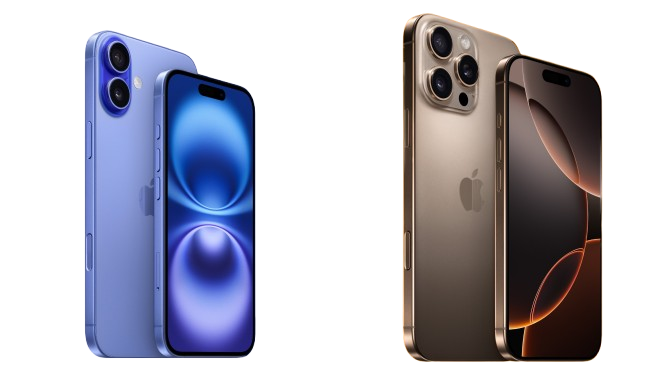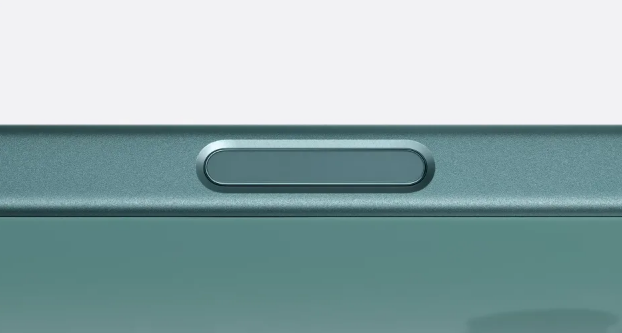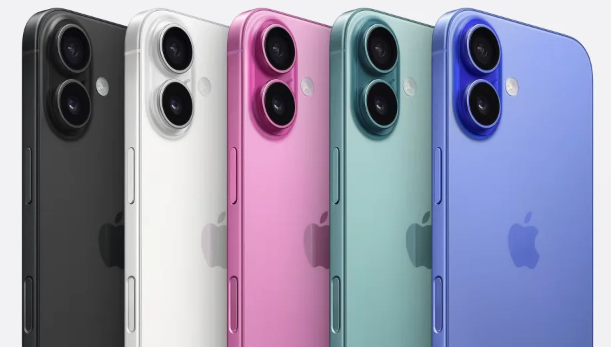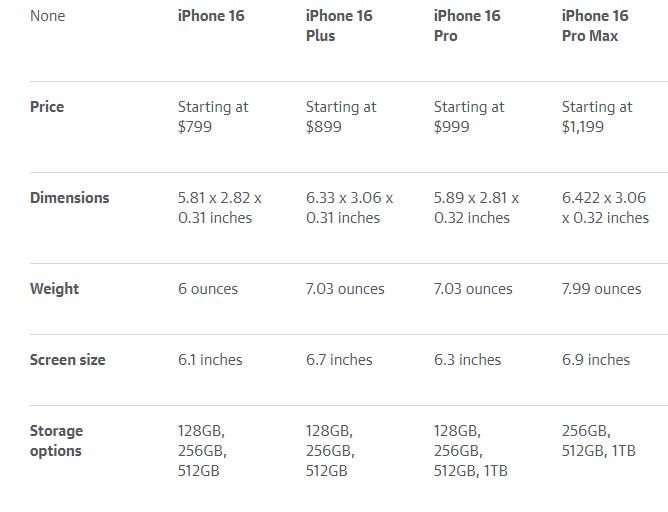
The Apple event on Monday unveiled the latest iPhone lineup, which includes the iPhone 16, 16 Plus, 16 Pro, and 16 Pro Max. If you’re thinking about upgrading to one of the latest models but aren’t sure what the differences are between the iPhone 16 and 16 Pro (apart from the price), we can help you decide which one is best for you.
Now that we’ve officially seen the iPhone 16 lineup, complete with all of the bells and whistles, we know that all variants will run iOS 18 and have access to Apple Intelligence when it launches in October. However, there are some additional benefits if you invest the extra couple hundred dollars for an iPhone 16 Pro.
We’ll explain the differences between the iPhone 16 and iPhone 16 Pro below. For more, see how the iPhone 16 Pro stacks up against the competition. If you decide you’re ready to take the plunge, remember that pre-orders for the iPhone 16 series begin September 13. The iPhone 16 starts at $799, and the iPhone 16 Pro at $999, with costs increasing by $100 for each size and storage capacity beyond the 128GB baseline.
Screen Size and Technology
In terms of screen size, the iPhone 16 Pro display is only slightly larger than the iPhone 16. The 16 Pro features 6.3-inch ProMotion technology and an Always-On display (similar to last year’s iPhone 15 Pro), while the iPhone 16 has a 6.1-inch display. All of this means that the Pro model has a quicker refresh rate of up to 120Hz, resulting in smoother video than the ordinary iPhone 16, which maxes out at TKHz.
Otherwise, the screen technology between the two devices is relatively similar. Both feature a Super Retina XDR display with same HDR, brightness, P3 color gamut, and True Tone specifications.
In terms of actual phone sizes, the two are very similar. The iPhone 16 is 5.81 inches tall, 2.82 inches wide, and weighs six ounces; the 16 Pro is 5.89 inches tall, 2.81 inches wide, and weighs little more than seven ounces.
The resolutions are also somewhat different: the iPhone 16 has 2,556 x 1,179 pixels and the 16 Pro has 2,622 x 1,206 pixels.
Both phones feature the latest-generation Ceramic Shield screen, which should provide adequate protection against drops and scratches. They also both support the Dynamic Island (originally launched with the iPhone 14 Pro), which replaces the notch on earlier iPhones.
Camera and microphone differences
The iPhone 16 has two cameras on the rear, just like previous models: a 48-megapixel Fusion primary camera and a 12-megapixel ultra wide camera. This combination lets you “zoom out” for wide-angle images (0.5x) and zoom in up to 2x.
The iPhone 16 Pro features a more advanced triple camera array, with a 48-megapixel Fusion primary camera and a new 48-megapixel super wide lens, as well as a 12-megapixel Telephoto camera. The third lens, 16 Pro, allows you to zoom in up to 5x and out up to 0.5x. The Pro phone boasts “second-generation sensor-shift optical image stabilization,” although the regular iPhone 16 most likely just has the first-generation version of that technology. The Pro can also shoot in Apple ProRAW format and provides night mode portrait images that are not accessible on the standard model.
On the video side, both iPhone 16 models can shoot 4K Dolby Vision video, although the Pro model can capture up to 120 frames per second. This permits superior slow-motion footage. The Pro further lives up to its name by including the Academy Color Encoding System, log video recording, and ProRes video recording on both the rear and front cameras. (If you have to ask what these are, you do not need them.)
Otherwise, the two devices’ camera capabilities are nearly identical. This contains two new features for 2024: photographic styles and the camera control button. Photographic Styles is similar to traditional Instagram filters, but with a significant difference: you can undo or modify the styles after capturing a photo. Meanwhile, the new Camera Control button is available on both the iPhone 16 and 16 Pro models, located on the bottom right side. It provides one-click access to photo and video shooting, as well as touch-sensitive manipulation for changing modes and framing shots.

Finally, the iPhone 16 Pro has a “studio-quality” four-mic array, which improves audio capture during video sessions and allows for the new multi-track recording option in the Memos app. (No, the feature is not available on the base iPhone 16 devices.
Under the hood: CPUs and RAM.
The iPhone 16 features the new-for-2024 A18 technology, which comprises a 6-core CPU, a 5-core GPU, and a 16-core Neural Engine. The iPhone 16 Pro features an equally new A18 Pro chip with a 6-core CPU, 6-core GPU, and 16-core Neural Engine.
Both A18 CPUs provide performance and power consumption benefits over the equivalent versions found in the 2023 iPhone 15 models. According to Macrumors, all iPhone 16 models have 8GB of RAM, which is the same as what the iPhone 15 Pro models had last year. The combination of processing power and on-board memory ensures that all iPhone 16 models will support the future Apple Intelligence capabilities.
USB Speed
While both the iPhone 16 and 16 Pro include USB-C connectors, the 16 Pro supports USB 3, which allows for up to 20 times higher transfer speeds. (The iPhone 16 supports USB 2.) That added speed is useful for creators who want to transfer video, audio, and images from their iPhone Pro.
These charge at the same rate, with a 50-percent charge in 30 minutes using a 20W adapter and a USB-C connection.
Color choices and design differences
As is customary, the iPhone 16 models come in vibrant new hues, while the iPhone 16 Pro comes in more muted tones. The iPhone 16 is built of metal with a glass back and comes in a variety of new colors, including ultramarine (periwinkle), teal, pink (but darker than last year’s pink), and white and black.
The iPhone 16 Pro is composed of titanium and has a textured matte glass back, with color options of desert (gold), natural (silver), white, or black.
Both phones have the Action button (only the iPhone 15 Pro presently has this), which allows you to set a variety of actions such as the ringer, flashlight, and voice memo. (Remember, the camera now has a dedicated button.)

Battery life
If the iPhone 16 lives up to Apple’s promised specifications, it should be a good choice for those searching for a phone with a long-lasting battery. The iPhone 16 supports up to 22 hours of video playing, 18 hours of streaming, and 80 hours of audio playback.
The 16 Pro supports up to 27 hours of video playing, 22 hours of streaming, and 85 hours of audio playback.
How about the iPhone 16 Plus and 16 Pro Max?
The iPhone 16 Plus is simply a larger version of the iPhone 16 with a longer battery life, and the same goes for the 16 Pro Max. They have the same functionality as their smaller counterparts, but their battery life and sizes varies.
The iPhone 16Plus
Battery : provides up to 27 hours of video playing, 24 hours of streaming, and 100 hours of audio playback. Actually, it outperforms the 16 Pro battery span.
Size: Has a 6.7-inch display, 6.33 inches height, 3.06 inches broad, and weighs slightly more than seven ounces.
The iPhone 16 Pro Max
battery : provides up to 33 hours of video playback, 29 hours of streaming, and 105 hours of audio playback.
Size: 6.9-inch display, 6.42-inch height, 3.06-inch width, and weights roughly eight ounces.
But how do the new iPhone 16 and 16 Pro perform in real life?
Our comprehensive assessments of the latest iPhones are still in the works. On launch day, our own Cherlynn Low spent some time with the new iPhones in Apple Park’s demo area. See her first impressions of the iPhone 16 and iPhone 16 Pro.









